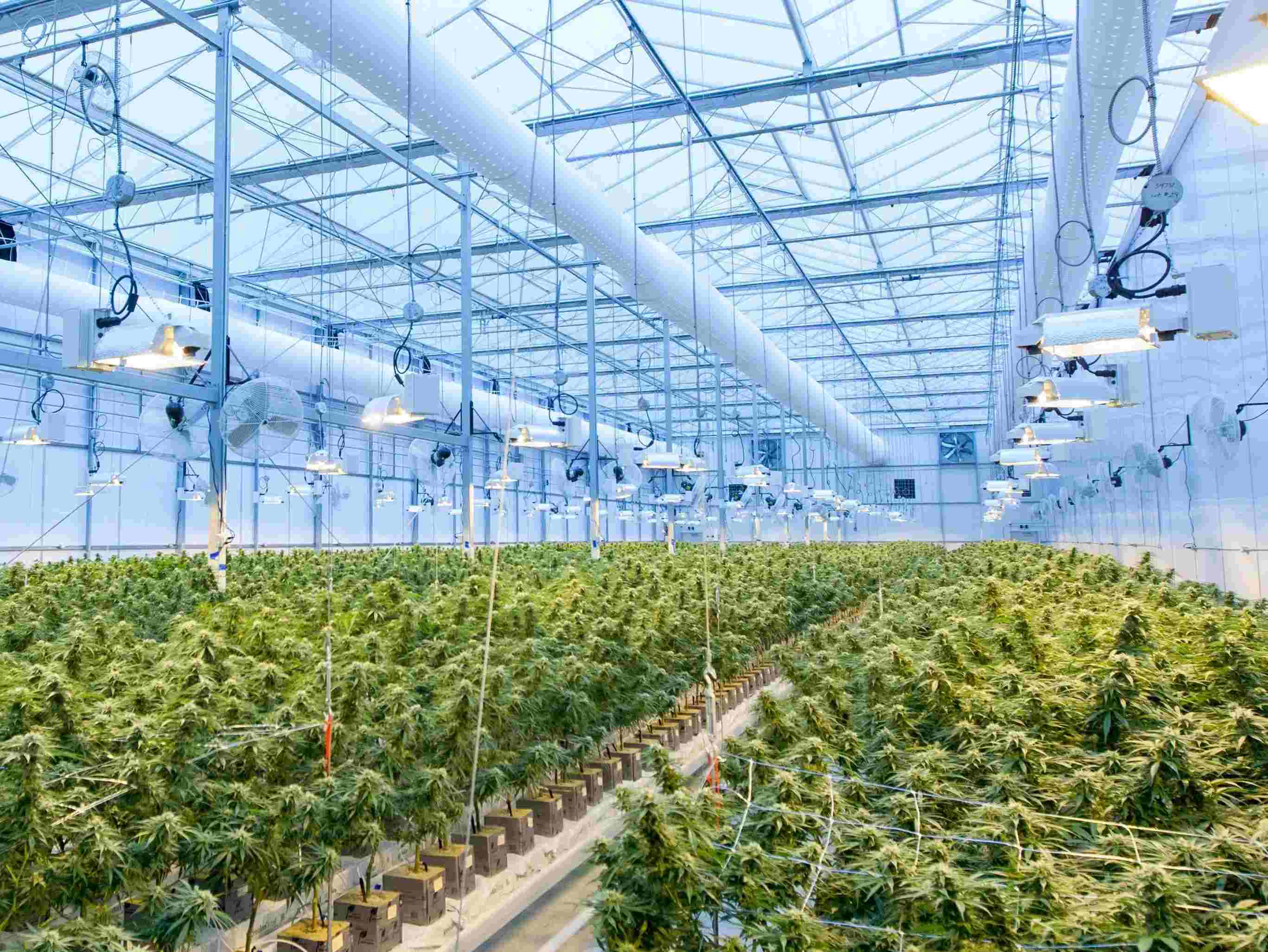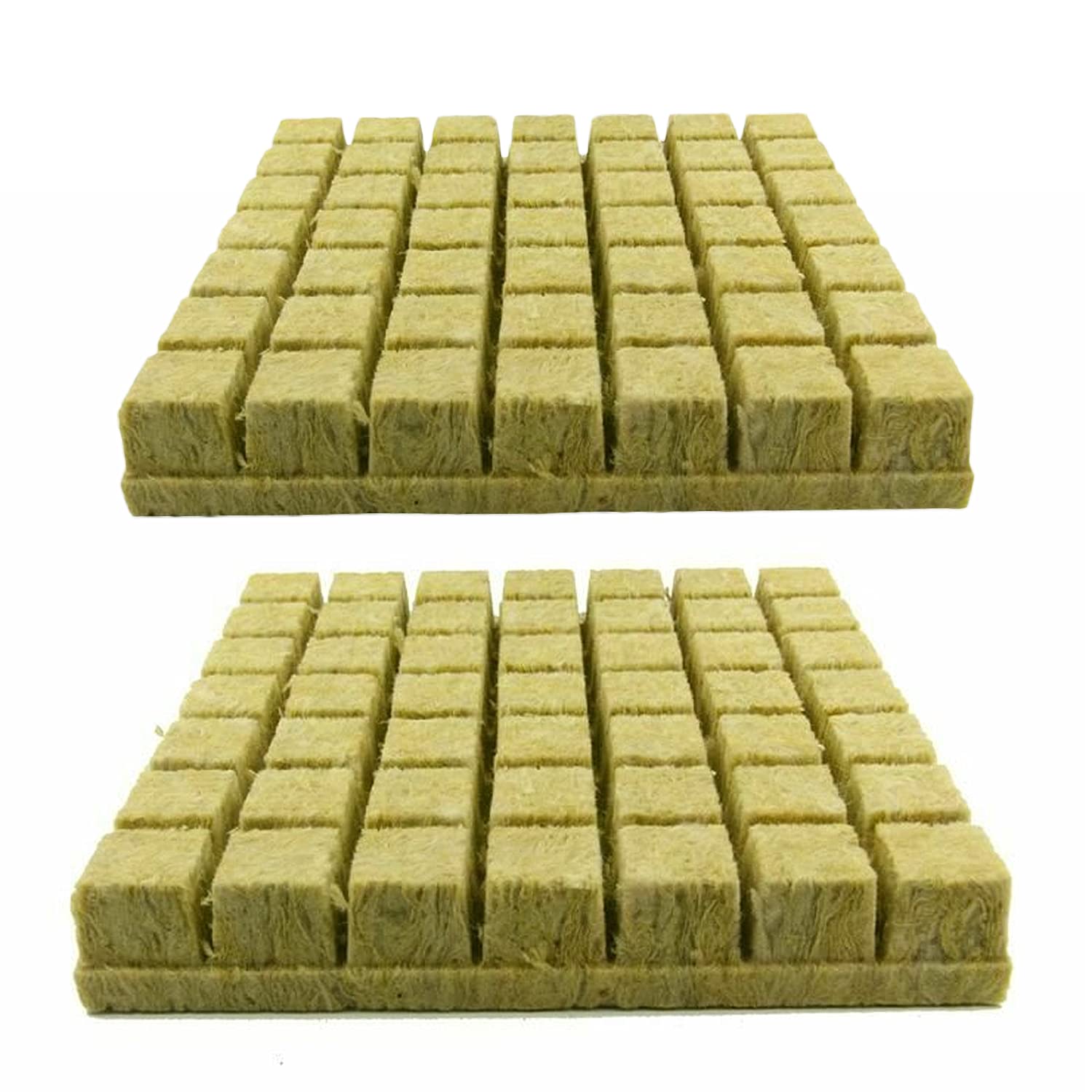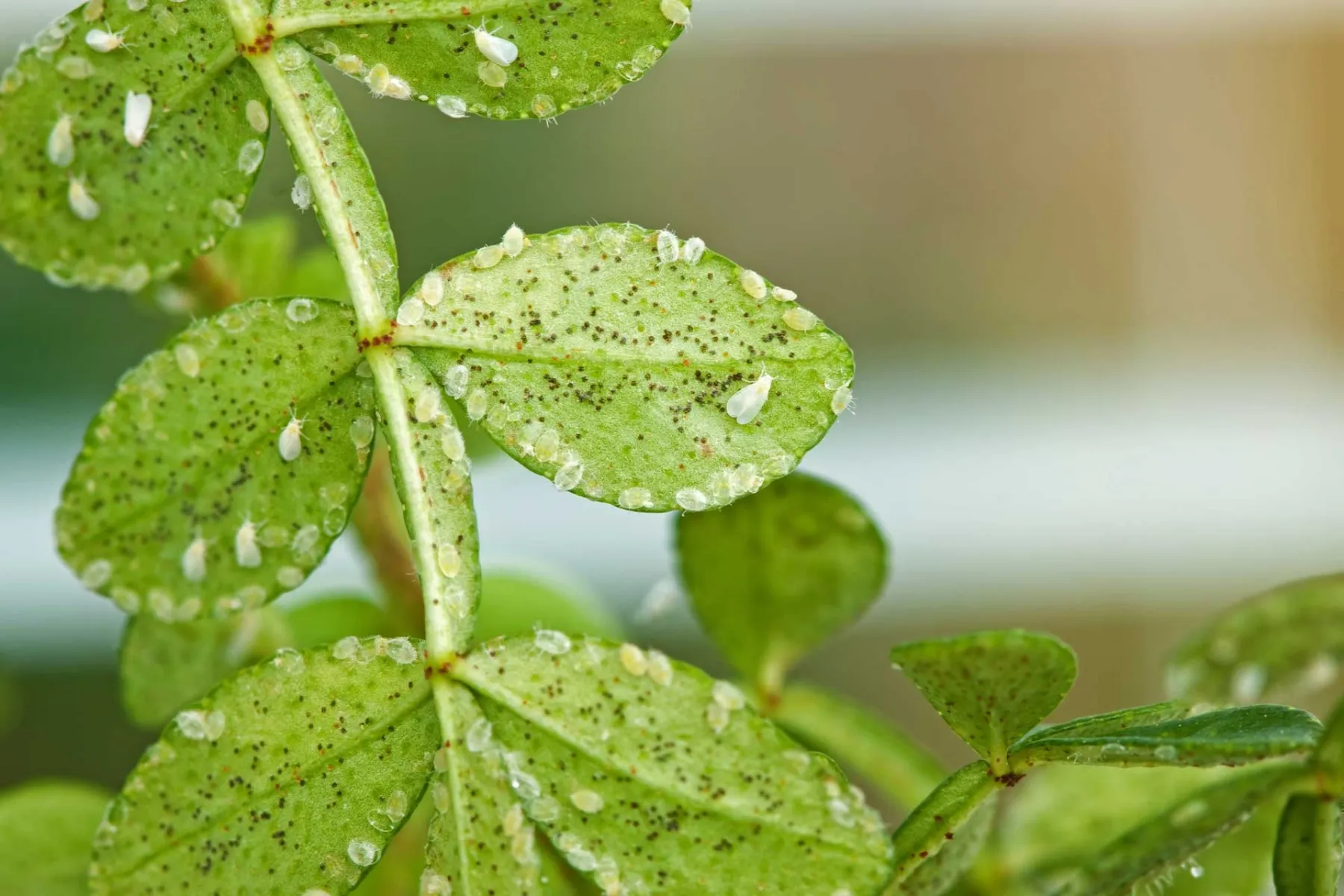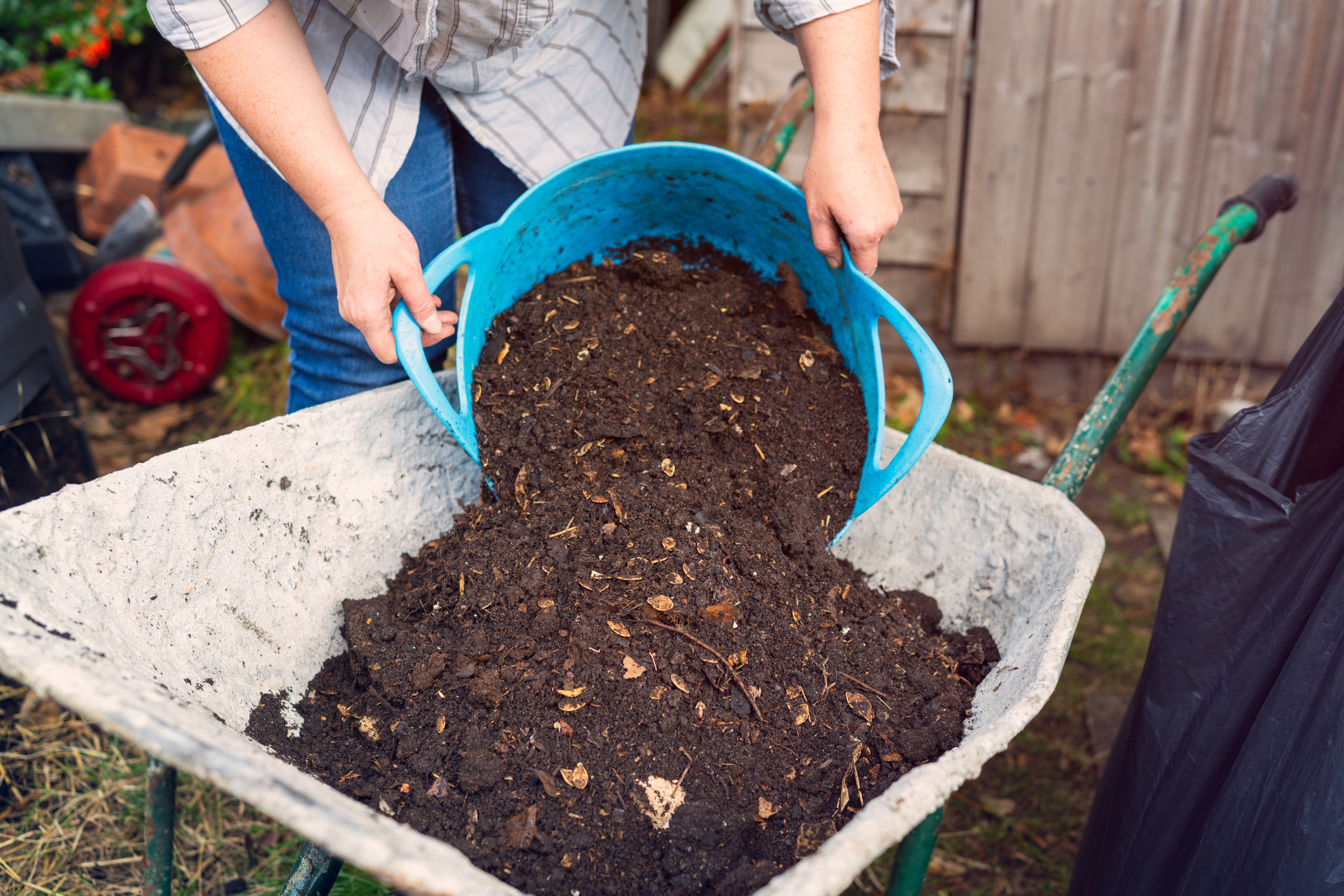Home>Gardening Tips and Tricks>Eco-Friendly Gardening>What Should TDS Be For Hydroponics


Eco-Friendly Gardening
What Should TDS Be For Hydroponics
Modified: January 22, 2024
Achieve eco-friendly gardening with the right TDS for hydroponics. Discover the optimal range for nutrient levels to promote healthy plant growth and sustainability.
(Many of the links in this article redirect to a specific reviewed product. Your purchase of these products through affiliate links helps to generate commission for Chicagolandgardening.com, at no extra cost. Learn more)
Table of Contents
- Introduction
- Understanding Total Dissolved Solids (TDS)
- Importance of Proper TDS Levels in Hydroponics
- Factors to Consider for Determining TDS Levels in Hydroponics
- Ideal TDS Ranges for Different Hydroponic Crops
- Monitoring and Measuring TDS in Hydroponics
- Adjusting TDS Levels in Hydroponics
- Common Challenges Related to TDS in Hydroponics
- Conclusion
Introduction
Welcome to the world of hydroponics, a revolutionary gardening method that allows you to grow plants without soil. Hydroponics offers numerous benefits, including efficient water usage, faster plant growth, and the ability to cultivate crops in limited spaces. When it comes to hydroponics, maintaining proper Total Dissolved Solids (TDS) levels is crucial for the health and success of your plants.
TDS refers to the concentration of dissolved substances in water, including minerals, nutrients, and other organic matter. In hydroponics, TDS measurement is used to gauge the nutrient strength of the growing solution. It provides valuable insights into the overall nutrient balance, indicating whether the plants are receiving an adequate supply of essential elements.
Your plants rely on a precise TDS range to thrive. If the TDS is too low, the plants may suffer from nutrient deficiencies, stunted growth, and weak root development. Conversely, if the TDS is too high, it can lead to nutrient toxicity, plant stress, and reduced crop yields.
Determining and maintaining the ideal TDS levels for your hydroponic system is essential to ensure optimal plant health and productivity. In this article, we will explore the importance of proper TDS levels in hydroponics, factors to consider when determining TDS levels, and the ideal TDS ranges for different hydroponic crops. We will also discuss how to monitor and measure TDS in your system, adjust TDS levels when necessary, and address common challenges related to TDS in hydroponics.
Ready to dive into the world of TDS and hydroponics? Let’s get started!
Understanding Total Dissolved Solids (TDS)
Before we delve into the importance of TDS levels in hydroponics, it’s essential to have a clear understanding of what TDS actually means. Total Dissolved Solids, as the name suggests, refers to the total amount of dissolved substances present in a liquid solution, typically measured in parts per million (ppm).
TDS includes a wide range of substances, such as minerals, nutrients, salts, organic matter, and other dissolved solids. These substances can originate from various sources, including fertilizers, water sources, and amendments used in hydroponic systems. When plants are grown hydroponically, they rely on nutrient-rich water solutions to obtain the necessary elements for their growth and development.
Measuring TDS allows growers to assess the nutrient concentration in the hydroponic solution. This information is crucial because it helps ensure that plants receive an optimal balance of essential elements necessary for their growth. TDS is a valuable indicator of the overall nutrient strength and can be used to monitor the nutrient uptake and plant health.
TDS can be measured using a handheld TDS meter or a conductivity meter. These devices work by measuring the electrical conductivity of the solution, which is directly related to the concentration of dissolved substances. The meter provides a TDS reading, which indicates the ppm or mg/L of dissolved solids in the solution.
It’s important to note that TDS measurements are not selective to individual elements. They provide an overall measurement of all dissolved substances present in the solution. Therefore, it is still necessary to have a basic understanding of the specific nutrient requirements of the plants being grown to ensure proper nutrient management in hydroponics.
Now that we have a clearer understanding of what TDS means and how it is measured, let’s explore why maintaining proper TDS levels is crucial in hydroponics.
Importance of Proper TDS Levels in Hydroponics
Maintaining proper TDS levels in hydroponics is of utmost importance for the successful growth and development of plants. The nutrient solution in a hydroponic system serves as the primary source of essential elements for the plants, and the TDS levels directly impact the availability and uptake of these nutrients.
Here are some key reasons why maintaining proper TDS levels is crucial in hydroponics:
- Nutrient Uptake: Plants rely on a precise balance of nutrients to carry out essential physiological processes. The TDS levels in the hydroponic solution play a vital role in ensuring that the plants have access to an optimal range of nutrients. When the TDS levels are within the appropriate range, plants can efficiently absorb essential minerals and nutrients, leading to healthy growth, development, and higher crop yields.
- Optimal Plant Health: Imbalanced TDS levels can have detrimental effects on plant health. If the TDS levels are too low, plants may experience nutrient deficiencies, leading to weakened growth, yellowing leaves, and poor overall vitality. On the other hand, high TDS levels can result in nutrient toxicity, causing nutrient imbalances, leaf burn, and reduced plant vigor. Maintaining proper TDS levels ensures that plants receive the right balance of nutrients for optimal health and productivity.
- Nutrient Management: Monitoring TDS levels provides valuable information about the nutrient status of the hydroponic solution. By regularly measuring TDS, growers can assess the nutrient strength and adjust the nutrient solution accordingly. If the TDS levels are too low, additional nutrients can be added to avoid nutrient deficiencies. Conversely, if the TDS levels are too high, dilution or adjustments can be made to prevent nutrient toxicity. Proper nutrient management based on TDS measurements ensures that plants have a consistent and balanced nutrient supply.
- Preventing Waterborne Issues: High TDS levels in the water source used for hydroponics can lead to various waterborne problems. Excessive dissolved solids in the water can cause clogged irrigation system, root damage, and inhibiting nutrient uptake. By maintaining proper TDS levels, growers can ensure that the water used in the hydroponic system is free from excessive dissolved solids and provide a suitable environment for healthy plant growth.
Understanding the importance of proper TDS levels in hydroponics is crucial to ensure optimal plant health and maximize crop yields. In the next section, we will explore the factors to consider when determining TDS levels in hydroponics.
Factors to Consider for Determining TDS Levels in Hydroponics
When it comes to determining the TDS levels in hydroponics, several factors need to be taken into consideration. These factors play a crucial role in establishing the optimal range of dissolved solids for different hydroponic systems. Let’s explore some of the key factors:
- Plant Stage: Different plants have varying nutrient requirements at different stages of growth. Young seedlings and vegetative plants require relatively lower TDS levels to promote healthy root and foliage development. However, as plants progress into the flowering or fruiting stage, their nutrient demands increase. Adjusting TDS levels based on the specific plant’s growth stage ensures that plants receive the appropriate balance of nutrients throughout their life cycle.
- Plant Species: Different plant species have different nutrient preferences. Some plants thrive in higher TDS levels, while others prefer lower levels. Understanding the specific nutrient requirements of the crop you are growing is crucial in determining the appropriate TDS range. It is advisable to refer to crop-specific guidelines or consult experts to determine the optimal TDS levels for the particular plant species you are cultivating.
- Water Quality: The quality of the water used in the hydroponic system affects the TDS levels. Water with high levels of dissolved minerals and salts will contribute to higher TDS readings. It is essential to test and assess the TDS levels of your water source before adjusting the nutrient solution. If the water source already has a high TDS level, it may be necessary to dilute the water or use alternate water sources to maintain optimal TDS levels.
- Nutrient Solution and Formulation: The composition and concentration of the nutrient solution are critical factors in determining the TDS levels. Different nutrient formulations and brands may vary in their recommended TDS ranges. It is essential to follow the manufacturer’s guidelines and properly mix the nutrient solution to ensure the desired TDS levels. Regular monitoring and adjustment of the nutrient solution based on plant response and TDS readings are crucial for maintaining optimal nutrient balance.
- Environmental Factors: Environmental conditions, such as temperature and humidity, can influence plant nutrient uptake and, consequently, the TDS levels. Higher temperatures and lower humidity can increase plant transpiration rates, leading to increased nutrient uptake and higher TDS levels. It is important to consider these environmental factors and make necessary adjustments to the nutrient solution to maintain the desired TDS levels under different growing conditions.
By considering these factors, growers can establish the appropriate TDS levels for their hydroponic systems, ensuring that plants receive the optimal balance of nutrients for healthy growth and maximum productivity. In the next section, we will explore the ideal TDS ranges for different hydroponic crops.
Ideal TDS Ranges for Different Hydroponic Crops
Each hydroponic crop has specific nutrient requirements, and maintaining the ideal TDS levels is essential to ensure optimal growth, development, and yield. While the ideal TDS range can vary based on factors such as plant species, growth stage, and environmental conditions, here are some general guidelines for popular hydroponic crops:
- Lettuce and Leafy Greens: Lettuce and leafy greens, such as spinach and kale, are known for their rapid growth and high nutrient demand. Generally, a TDS range of 800-1500 ppm is suitable for these crops during the vegetative stage. However, as the plants mature and enter the flowering stage, it is recommended to reduce the TDS levels to 600-1000 ppm.
- Tomatoes and Peppers: These fruiting crops require higher nutrient concentrations to support flower and fruit development. During the vegetative stage, a TDS range of 1000-1500 ppm is recommended. As the plants enter the flowering and fruiting stage, the TDS levels can be increased to 1500-2000 ppm to promote robust fruit production.
- Herbs: Herbs like basil, mint, and cilantro have varying nutrient requirements. Generally, a TDS range of 800-1200 ppm during the vegetative stage and 900-1500 ppm during the flowering stage is suitable for most herbs. It is advisable to refer to specific crop guidelines for precise recommendations.
- Strawberries: Strawberries have relatively lower nutrient demands compared to some other crops. A TDS range of 800-1200 ppm during the vegetative stage and 900-1300 ppm during the fruiting stage is commonly recommended for strawberries grown in hydroponic systems.
- Cucumbers: Cucumbers are vigorous growers and require higher nutrient concentrations. A TDS range of 1200-1800 ppm during the vegetative stage and 1500-2000 ppm during the fruiting stage is suitable to support their growth, flowering, and fruit production.
It’s important to note that these ranges are general guidelines, and actual TDS requirements can vary depending on specific cultivars, growing conditions, and nutrient solutions used. It is recommended to refer to crop-specific resources or consult with experts to determine the precise TDS ranges for the crop you are growing.
Once the ideal TDS range is established, it is crucial to monitor and measure the TDS levels in your hydroponic system regularly. In the next section, we will explore different methods and tools for monitoring and measuring TDS in hydroponics.
Monitoring and Measuring TDS in Hydroponics
Monitoring and measuring TDS levels is a critical aspect of successful hydroponic gardening. Regularly assessing the TDS of your nutrient solution allows you to maintain optimal nutrient balance and ensure the health and productivity of your plants. Here are some methods and tools commonly used for monitoring and measuring TDS in hydroponics:
- TDS Meters: TDS meters, also known as EC (Electrical Conductivity) meters, are handheld devices specially designed to measure the TDS of a solution. These meters work by measuring the electrical conductivity of the solution, which is directly related to the concentration of dissolved solids. TDS meters provide readings in parts per million (ppm) or milligrams per liter (mg/L). To measure the TDS, simply immerse the meter’s probe into the nutrient solution and wait for the reading to stabilize. TDS meters are widely available, affordable, and easy to use, making them a popular choice among hydroponic growers.
- Monitor Controllers: For larger-scale hydroponic systems, monitor controllers can be used to continuously monitor and maintain TDS levels. These controllers consist of a TDS probe or sensor that is placed in the nutrient solution. The probe sends data to the controller, which adjusts the nutrient solution’s composition or dilutes it with pure water to maintain the desired TDS range. Monitor controllers automate the process of TDS monitoring and adjustment, providing precise control over nutrient levels and minimizing manual intervention.
- Visual Inspection: While not as precise as using a TDS meter, visual inspection can give an indication of the nutrient levels in the hydroponic solution. By observing the color and clarity of the nutrient solution, you can get a rough idea of the nutrient concentration. Clear and transparent solutions may suggest a lower TDS, while cloudiness or discoloration can indicate a higher TDS level. However, it’s important to note that visual inspection alone cannot provide accurate TDS values and should be used in conjunction with other monitoring methods for better nutrient management.
- Regular Sampling and Laboratory Analysis: For growers who require highly accurate TDS measurements or want a comprehensive analysis of their nutrient solution, regular sampling and sending samples to a laboratory for analysis is an option. Lab analysis can provide detailed information about the nutrient composition and TDS levels in the solution, helping fine-tune nutrient management strategies. This method is more time-consuming and expensive than using handheld TDS meters, making it more suitable for research purposes or larger commercial operations.
Regardless of the method chosen, it is important to establish a regular monitoring schedule to track TDS levels in your hydroponic system. This enables you to identify any fluctuations or imbalances and take appropriate actions to maintain optimal TDS ranges for your plants. In the next section, we will explore how to adjust TDS levels in hydroponics to ensure nutrient balance.
Adjusting TDS Levels in Hydroponics
Maintaining the proper TDS levels in hydroponics requires regular monitoring and adjustment to ensure optimal nutrient balance for plant growth. If the TDS levels in your hydroponic system are not within the desired range, adjustments can be made to bring them back to the optimal levels. Here are some methods for adjusting TDS levels in hydroponics:
- Adding Nutrients: If the TDS levels are too low, indicating a nutrient deficiency, additional nutrients can be added to the hydroponic solution. This can be done by preparing a separate nutrient solution with a higher concentration of essential elements and gradually adding it to the system. It is important to follow the recommended dosage instructions provided by the nutrient manufacturer and avoid overfeeding the plants, as excessive nutrient levels can lead to nutrient toxicity.
- Dilution: If the TDS levels are too high, indicating excessive nutrient buildup, dilution is a common method to bring the levels down. In this approach, part of the nutrient solution is replaced with pure water to lower the overall concentration of dissolved solids. It is important to carefully monitor the TDS levels during the dilution process to avoid reducing the nutrient concentration below the desired range. Dilution can be done gradually over several days to maintain a stable environment for the plants.
- pH Adjustment: In some cases, imbalanced pH levels can contribute to skewed TDS readings. If the TDS levels are not aligning with the expected range, it is recommended to check and adjust the pH of the nutrient solution. pH plays a crucial role in nutrient uptake and solubility. By ensuring the pH is within the optimal range for the specific plants being grown, you can improve nutrient availability and uptake, which ultimately impacts TDS levels.
- Water Quality Adjustment: As mentioned earlier, the quality of water used in hydroponics can impact TDS levels. If the water source has naturally high TDS levels, it may be necessary to consider alternative water sources or incorporate water treatment methods like reverse osmosis to reduce TDS before preparing the nutrient solution. This helps to ensure that TDS levels are within the desired range right from the start, minimizing the need for subsequent adjustments.
It’s important to note that adjustments should be made gradually and in small increments to avoid sudden shocks to the plants. Regular monitoring of the TDS levels, along with plant growth and response, can help determine the effectiveness of the adjustments and guide further modifications if necessary.
By being proactive in adjusting TDS levels, you can ensure that your hydroponic plants receive the optimal nutrient balance for healthy growth and development. However, there are some common challenges that hydroponic growers may encounter related to TDS levels, which we will explore in the next section.
Common Challenges Related to TDS in Hydroponics
While hydroponics offers many benefits, there are some common challenges that growers may face related to TDS levels. Understanding these challenges can help you identify and address potential issues in your hydroponic system. Here are some common challenges related to TDS in hydroponics:
- Fluctuating TDS Levels: TDS levels can fluctuate due to various factors, such as evaporation, plant uptake, nutrient dosing, and water quality. It is important to monitor TDS levels regularly to catch any fluctuations and make necessary adjustments to maintain the desired range. Fluctuating TDS levels can impact nutrient availability and plant health, so it’s essential to address any fluctuations promptly.
- Accurate TDS Measurements: Getting accurate TDS measurements is crucial for proper nutrient management. However, various factors can affect the accuracy of TDS readings, such as temperature, calibration of the meter, and probe maintenance. It is important to calibrate your TDS meter regularly and follow the manufacturer’s instructions for proper maintenance and storage. Additionally, measuring the TDS at a consistent temperature can help ensure more accurate readings.
- Water Source Quality: Water quality plays a significant role in TDS levels. If the water source has high TDS levels, it can impact the nutrient solution’s TDS even before adding any fertilizers or amendments. Testing the water source and considering appropriate water treatment methods, like reverse osmosis, can help mitigate potential issues related to high TDS in the water and ensure a suitable environment for healthy plant growth.
- Nutrient Imbalance: Maintaining the proper balance of nutrients is crucial for plant health. Imbalanced TDS levels can lead to nutrient deficiencies or toxicities, affecting plant growth and overall productivity. Regularly monitoring your plants for any signs of nutrient imbalances, such as yellowing leaves or stunted growth, can help identify and address nutrient issues promptly. Adjusting the nutrient solution and TDS levels according to plant response can help maintain nutrient balance.
- Plant Sensitivity: Each plant species has specific tolerance levels for TDS. Some plants may be more sensitive to higher TDS levels, while others may require higher concentrations. Understanding the sensitivity of the plants you are growing and adjusting the TDS levels accordingly is important for maximizing growth and yield. Experimenting with different TDS ranges for specific plant varieties can help fine-tune the nutrient management approach.
Overcoming these challenges requires consistent monitoring, attention to detail, and the willingness to make necessary adjustments to maintain optimal TDS levels. By addressing these challenges head-on, you can create a balanced and thriving hydroponic system for your plants.
Now that we’ve explored the common challenges related to TDS in hydroponics, let’s summarize the key points discussed in this article.
Conclusion
Proper TDS management is crucial for successful hydroponic gardening. Understanding and maintaining optimal TDS levels ensures that plants receive the right balance of nutrients for healthy growth, development, and maximum productivity. By monitoring TDS levels regularly, you can identify any imbalances and take appropriate actions to address them, such as adjusting nutrient concentrations, diluting the solution, or treating the water source.
Factors such as plant stage, species, water quality, nutrient solution formulation, and environmental conditions all play a role in determining the ideal TDS ranges for different hydroponic crops. By considering these factors and referring to specific crop guidelines, you can establish the appropriate TDS levels and provide the most suitable growing conditions for your plants.
Monitoring TDS can be done through various methods, including handheld TDS meters, monitor controllers, visual inspection, and laboratory analysis. Regular monitoring and adjusting TDS levels based on plant response and TDS readings are key to ensuring nutrient balance and the overall health of your plants.
While challenges related to TDS levels, such as fluctuating levels, accurate measurements, water quality, nutrient imbalances, and plant sensitivities, may arise, an attentive and proactive approach can help overcome these challenges. Consistent monitoring and timely adjustments are essential to maintaining optimal TDS levels and promoting successful hydroponic gardening.
With the right knowledge, attention to detail, and dedication to TDS management, you can create a thriving hydroponic system that yields healthy plants, bountiful harvests, and an eco-friendly gardening experience.









